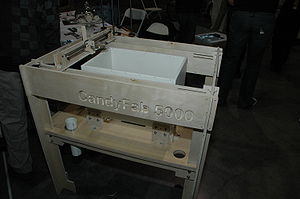Tissue Engineering:The World’s Smallest 3-D Printer
A research project at the Vienna University of Technology (TU Vienna) has paved way to smallest and affordable printers,producing 3-D objects.Several scientific fields have to come together, to design a 3D-printer. The device was assembled by mechanical engineers in the research group of professor Jürgen Stampfl, but also the chemical research by the team of professor Robert Liska was of crucial importance: first, chemists have to determine which special kinds of synthetic material can be used for printing.
The basic principle of the 3D-printer is quite simple: The desired object is printed in a small tub filled with synthetic resin. The resin has a very special property: It hardens precisely where it is illuminated with intense beams of light. Layer for layer, the synthetic resin is irradiated at exactly the right spots. When one layer hardens, the next layer can be attached to it, until the object is completed. This method is called “additive manufacturing technology.” “This way, we can even produce complicated geometrical objects with an intricate inner structure, which could never be made using casting techniques,” Klaus Stadlmann explains. He developed the prototype together with Markus Hatzenbichler.



